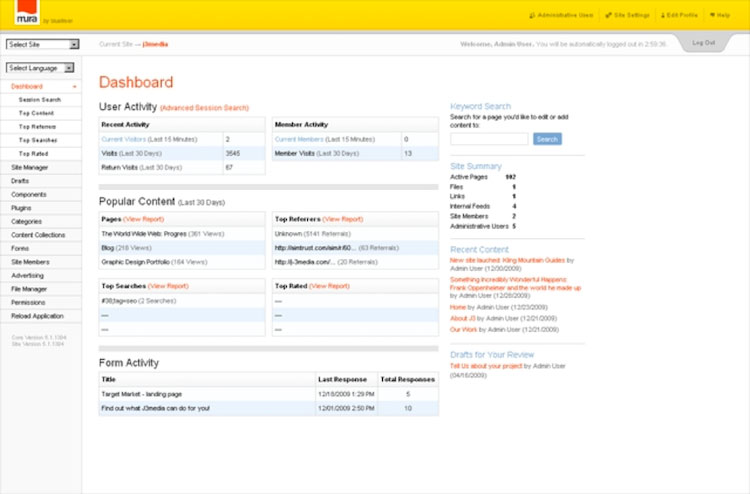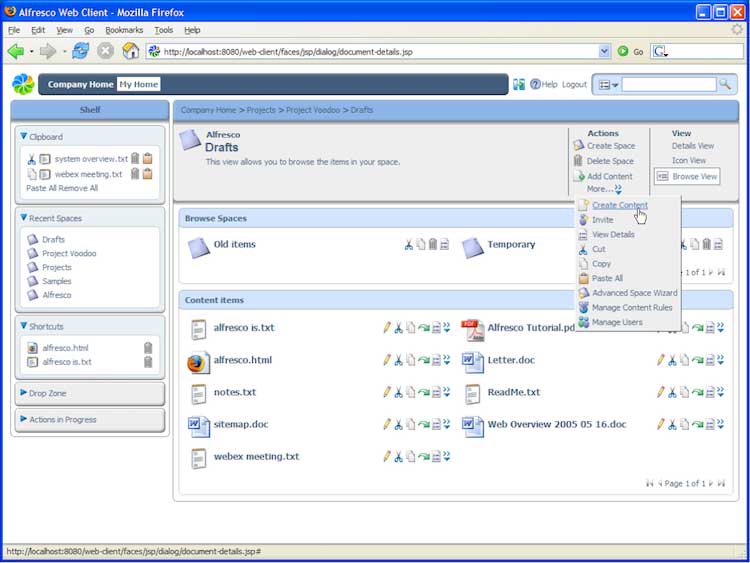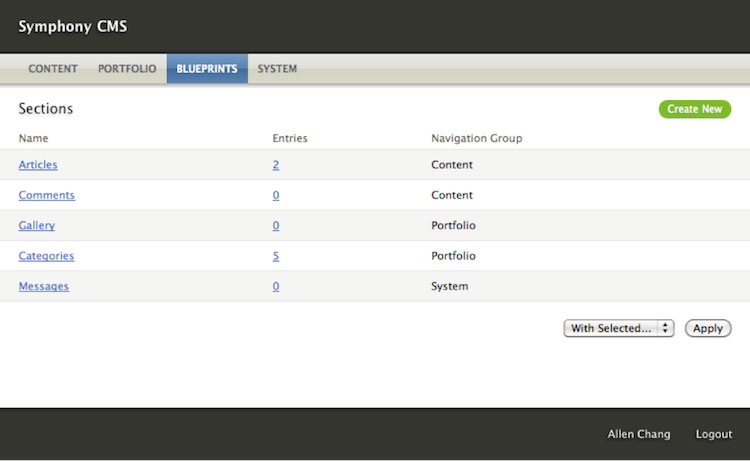
There are many content management systems available today, and each has its own set of core features. These vary widely from system to system. With this, people have their own favorites. Web-savvy individuals keep track of the latest in the industry.
However, we sometimes overlook lesser-known CMS with features that are worth checking out. These CMS have already been around for quite some time. MODx, Mura, Alfresco and Symphony are just a few of the CMSs that many people don’t know about.
MODx CMS

MODx has some great features. MODx users no longer have to worry about their output. This CMS is quite refreshing as it is different. A typical project requires users to set up a site map. They should be able to do the site design and prototype it in CSS, HTML or Javascript. The prototype should then be converted into templates. This can be done by putting in template variables.
There are many reasons why webmasters should consider using MODx. The best thing of all is that MODx is free. Additionally, it is among the most user-friendly CMSs available today. MODx is also SEO optimized. Users can create their pages in any way they want. They can rely on the fact that these pages will appear the way they want them to. There are also no limits. This is particularly true with the use of WYSIWYG editors. With MODx, there is no need to cut out parts of the HTML code. MODx allows users to key in their codes and display output the way they expect it to be.
Mura CMS

Mura runs on any Java or ColdFusion application server. It is open source and guaranteed user-friendly. This CMS is designed to provide users with the easiest possible way to manage their content through its outstanding features. This includes cross-browser support, a graphic installer, multi-database support and WYSIWYG editing. It also has typical CMS features like themes, a user manager, plug-ins, a file browser, categories, marketing tools, versioning and many others.
At present, there are many well-known companies and government organizations that use Mura. This includes AT&T, Intel, Lockheed Martin, Auburn University, Michigan State University, Amtrack and the Navy Marine Corps. All these organizations have used Mura for large projects, but it can also be used for smaller projects. Mura boasts powerful personalization capabilities. Users can enjoy serving content based on the needs of target users. Additionally, Mura allows users to have their own dashboard upon log-in.
Alfresco CMS

Alfresco has started to emerge in the CMS industry as an open source and lower-risk solution. Using this CMS allows webmasters to take greater control over internal content from an integrated platform. Alfresco CMS is easy to customize despite the more complicated features that websites have today. Alfresco is packed with process support and audit capabilities. Alfresco CMS is used in three different areas. It can be used in marketing, and it is beneficial for developers and system architects.
Alfresco features designed for marketing allow webmasters to edit, review and publish content. The Alfresco Web Editor allows users to edit and create new content without needing to know how the content is managed. It also has advanced social collaboration capabilities that allow people to distribute work to virtual teams. They may also upload and modify web content using Microsoft SharePoint Protocol.
Meanwhile, Alfresco for developers is designed to help these professionals deliver web applications in the easiest and fastest way. Being open source allows users to take advantage of the scalable development platform that can be expanded in order to keep up with business demands. Furthermore, architects can also use Alfresco to design all sorts of web applications. With this, they can define and build virtual infrastructure for current and future business needs.
Symphony CMS

Symphony CMS is another less-known system that works well for a number of businesses. This CMS works as a content management system framework that provides developers with four types of building blocks to create the desired features. Companies using Symphony CMS includes Heineken, Virgin Media, the Museum of Australian Democracy and MTV.
At present, this CMS relies on the community forum for development. However, the creators say that Symphony is based on simplicity as a development philosophy. All the non-essential functions are left to the users and not made a part of the core system. With this, Symphony CMS remains flexible. Users can really benefit from this unique feature.
Symphony users who cannot find the feature that they are looking for in the extensions library may ask the forums. There is likely a developer working on it. Otherwise, the user can build an extension and share it with others. In addition, Symphony is mostly used for enterprise-level projects.
Have you used a CMS that isn’t common? Let us know which one you used and why in the comments below!